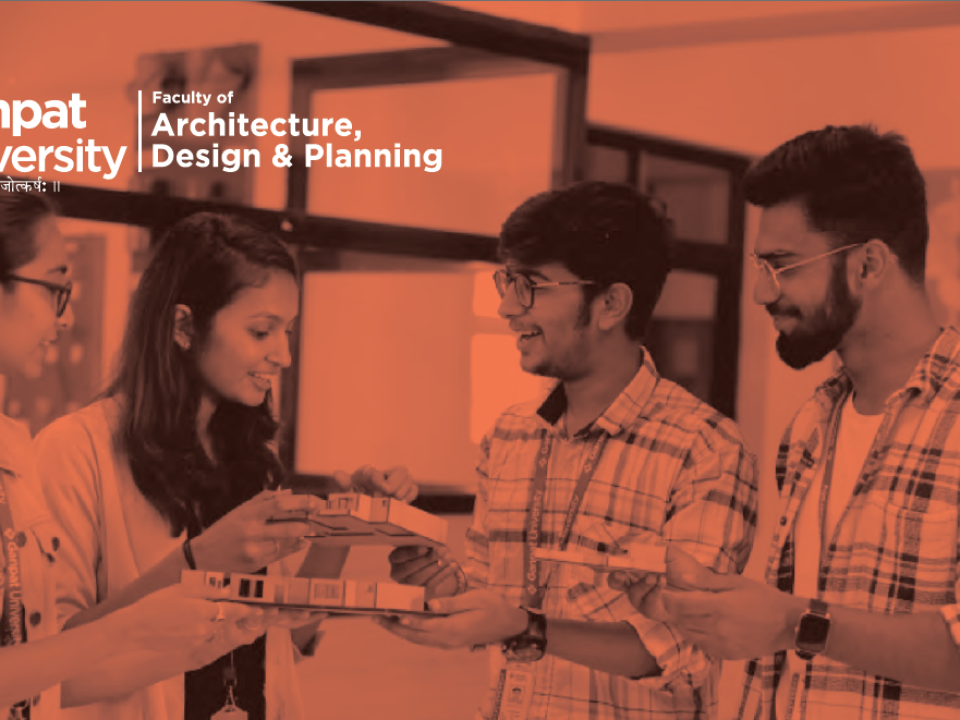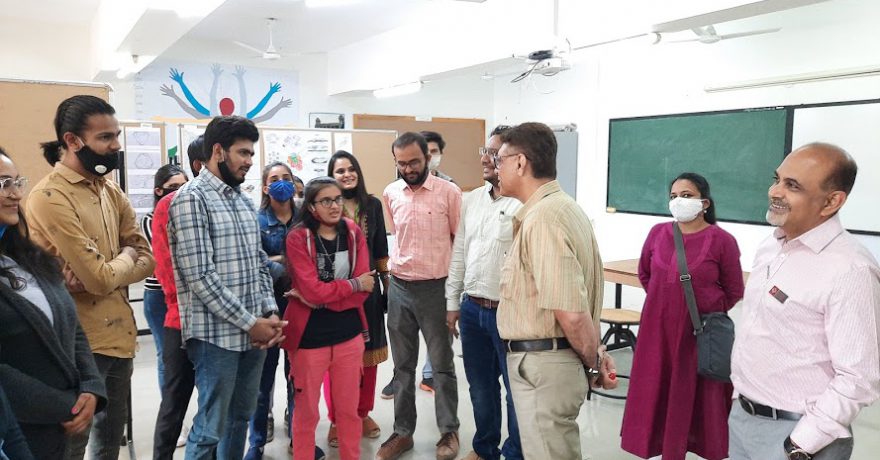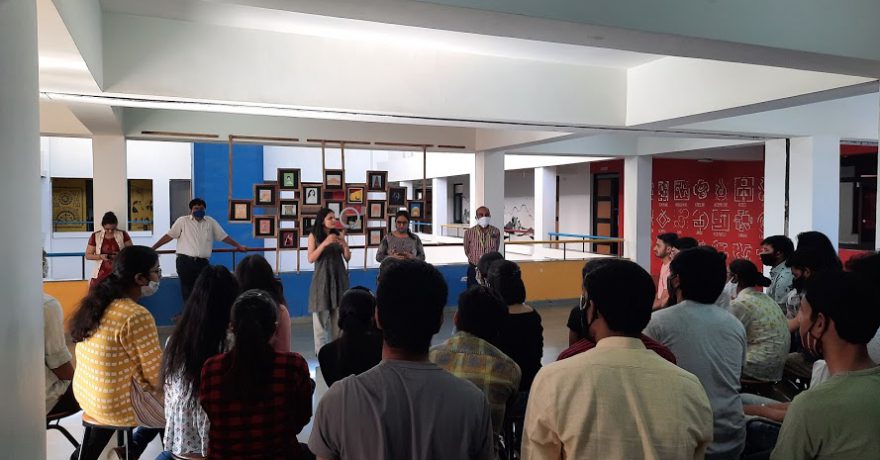
4-year Bachelor of Design (B.Des.) with Multiple Exit Options as per NEP 2020, followed by a 2-year pick-&-choose Master of Design (M.Des.) program.
- B.Des.(ID) + M.Des.(ID)/M.Des.(FD)/M.Des.(PD)/M.Des.(CD)
- B.Des.(FD) + M.Des.(FD)/M.Des.(PD)/M.Des.(CD)
- B.Des.(PD) + M.Des.(PD)/M.Des.(FD)/M.Des.(CD)
- B.Des.(GVC) + M.Des.(CD)/M.Des.(AV)
Eligibility criteria: higher secondary (10+2) qualification or diploma (10+3) completed from a recognized educational board or UGC-recognized institution, respectively, in any stream, with a minimum aggregate score of 45%.
- ID – Interior Design
- GVC – Graphics and Visual Communication)
- FD – Furniture Design
- PD – Product Design
- CD – Communication Design
- AV – Animation & Visual Effect
PEO & PO’S
Programme Educational Objectives
- Development of Understanding & Knowledge: Demonstrate a critical awareness of the principles that underpin the design process, including aesthetic, functional and technical requirements of the project.
- Development of Understanding & Knowledge: Apply critical thinking through analysis and communication that underpins the historical and contemporary theories of architecture, art and design, technology and human science.
- Development of Understanding & Knowledge:Demonstrate a comprehensive awareness of architecture and planning appropriate and relation to the design discipline.
- Development of Understanding & Knowledge:Demonstrate an awareness of the key developments of current trend and emerging technologies and of inter- and multi-disciplinary approaches related to interior design.
- Development of Skills: Demonstrate the application of creative skills with reference to comprehensive design solutions in response to a brief.
- Development of Skills: Integrate critical design thinking, research and analytical skills from visual perception to physical experience of form, space and in relation to time.
- Development of Skills: Contextualise and convey ideas and intentions eloquently through visual, oral and written media.
- Development of Skills: Analyse information, experiences and formulate & develop independent judgements for articulating reasoned arguments related to design process and its outcome.
- Development of Skills: Select and make appropriate use of materials, processes and sustainable approach in interior design.
- Our graduates with strong technical & sensible competency to become professional Interior designer leading to a successful career.
- Our graduates with skills and knowledge to understand and solve complex designing problems for the betterment of the society and environment.
- Our graduates with professional ethics and ethos for lifelong learning contributing to the integrity of their profession.
- Our graduates with development of lifelong learning and advance their careers through activities such as participation in professional organisations, involvement in R & D and seeking higher education.
- The programme follows modern dynamic curriculum with wide range of courses.
- Wide range of electives nurture interests of students.
- Students are encouraged to develop critical thinking.
- Hands on practical experience is imparted through workshops.
- Scholarship are given to meritorious students.
- The Institute is equipped with State-of-the-art Material lab, Climate Lab and Computer lab.
- The Institute has academically strong core faculties with diverse background.
- Expert lectures and seminars by professionals and academicians are regularly organised.
The matrix of Course structure having eight semesters is made up of following “Areas”
- ARTS & CRAFT:
- Basic Design
- Design Graphic Skills
- DESIGN:
- Design
- Humanities
- History of Design
- Theory & Criticism
- SKILLS:
- Hand skills
- Computer base skills
- TECHNOLOGY:
- Building Material
- Interior Materials
- Construction
- Technology
- Services & Structure
- PRACTICE:
- Professional Practice
- Office/field Training
- ENVIRONMENT:
- Environmental Science
- Sustainability
- Climatology
- SUPPLEMENTARY:
- Related Study Program (RSP)/ Electives/ Communication Skills


The studio space is a soul space for the Institute of Architecture and Planning as the learning at the institute is centered around a studio. The purpose of a studio is beyond a mere classroom as apart from the lectures and project work, a lot of hands-on work – “learning by doing” takes place in a studio space. Studios are large spaces where design work can happen and students can engage beyond instructional time and faculty guidance.
There are a total of 6 studios for BArch programme. Each studio is around 145 sq. Mts. in size and connected to a corridor and a courtyard in the centre. The studios are designed to allow maximum natural light and ventilation in the working space. The large open space in front of each studio is an engine for productive discourse. The design reviews and class discussions take place in this space. Each studio is ICT Enabled studio.


There are a total of 6 studios for BArch programme. Each studio is around 145 sq. Mts. in size and connected to a corridor and a courtyard in the centre. The studios are designed to allow maximum natural light and ventilation in the working space. The large open space in front of each studio is an engine for productive discourse. The design reviews and class discussions take place in this space. Each studio is ICT Enabled studio.
